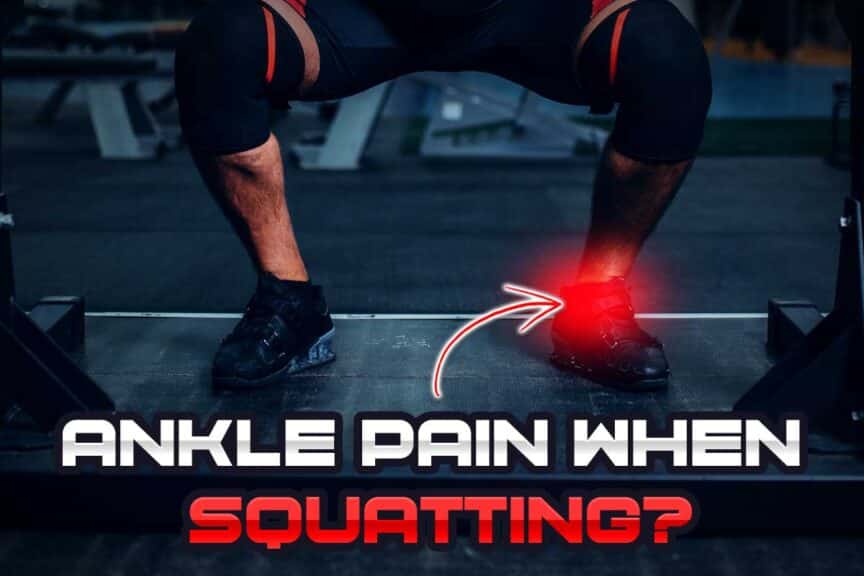Squats are supposed to build a stronger lower body, not cause ankle pain. And it’s hard to get stronger when you can’t squat properly due to said pain. So… that’s lame, right? It’s better to just figure out what’s going on and attack the issue head-on so you can get back to squatting to your heart’s content.
This article will walk you through all the pertinent information you should be aware of when it comes to experiencing ankle pain during squats (and how to fix it). So, buckle up ‘cause there’s some significantly helpful insight below.
Ankle pain from squats is often the result of several factors, including poor ankle mobility, poor foot and ankle biomechanics, and unhealthy tissues. Solutions involve optimizing joint mobility and tissue health. Specific actions for each are discussed within this article.
Let’s not waste any of your time here. What follows below is the information you’ll likely need to know to get back to pain-free squats. Just keep in mind – as always – that I can’t address everything within a single article, and you should always seek appropriate medical advice for what’s causing your ankle pain.
Nonetheless, what follows are the common issues for why athletes and active individuals can experience these ankle issues and how they can often be resolved.

The ankle vs the foot
As we dive into this article, I need to quickly mention that I will be covering issues that can cause pain in the ankle itself and in the foot near the ankle. I’m doing this for a couple of reasons.
Reason 1: Many lifters and athletes who often experience or perceive pain around the ankle are actually experiencing the symptom of pain that’s actually arising from an underlying cause within the foot.
Reason 2: Many individuals often think that the ankle and foot (particularly the hindfoot) are synonymous (the same thing) when in fact, they are distinctly different. As a result, people can mean that they’re experiencing pain in their foot but use the term “ankle” instead. So, I’ll be covering the ankle and much of the foot within this article just to make sure nothing is being missed.
As we dive into it, let’s do a fundamental rundown on the ankle joint and the foot; it will help to make your recovery process much more straightforward and effective.
The ankle joint: Basic anatomy
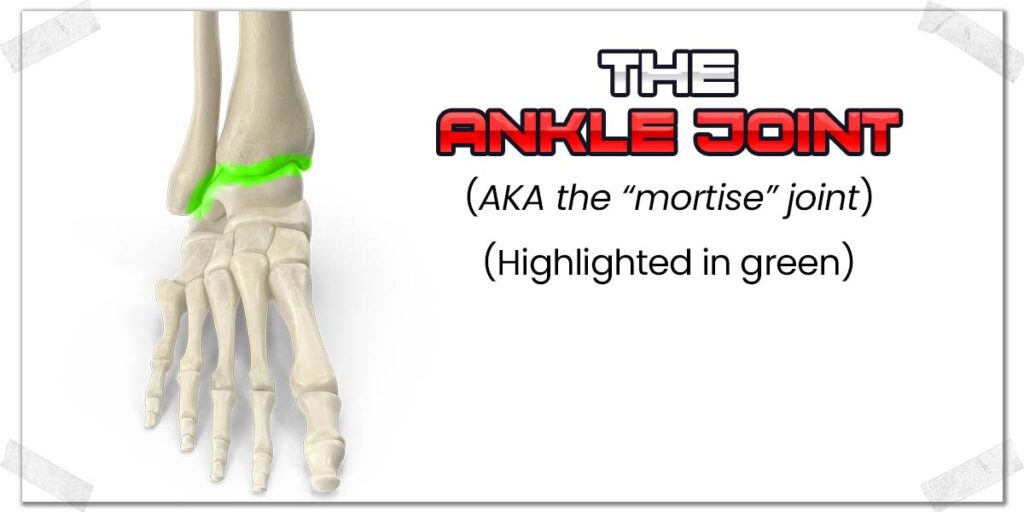
The ankle joint (also known as the mortise or mortise joint) is the articulation that occurs as the result of the bottom of the tibia (shinbone), the fibula, and the talus bone.
This joint can produce four different movements:
- Pulling the foot upwards (dorsiflexion)
- Pushing the foot downwards (plantarflexion)
- Rolling the foot inwards (inversion)
- Rolling the foot outwards (eversion)
There are numerous tendons that cross over the ankle joint, any of which can become unhealthy and painful, leading to pain in or around the ankle region (specifics will follow shortly).
Common tendons that cross the foot or ankle joint that often cause pain include:
- The Achilles tendon
- The tibialis anterior tendon
- The extensor digitorum longus tendon
- The tibialis posterior tendon
- The peroneal/fibularis tendons
Treating unhealthy or painful tendons will be discussed in greater detail later in the article.
The foot: basic anatomy
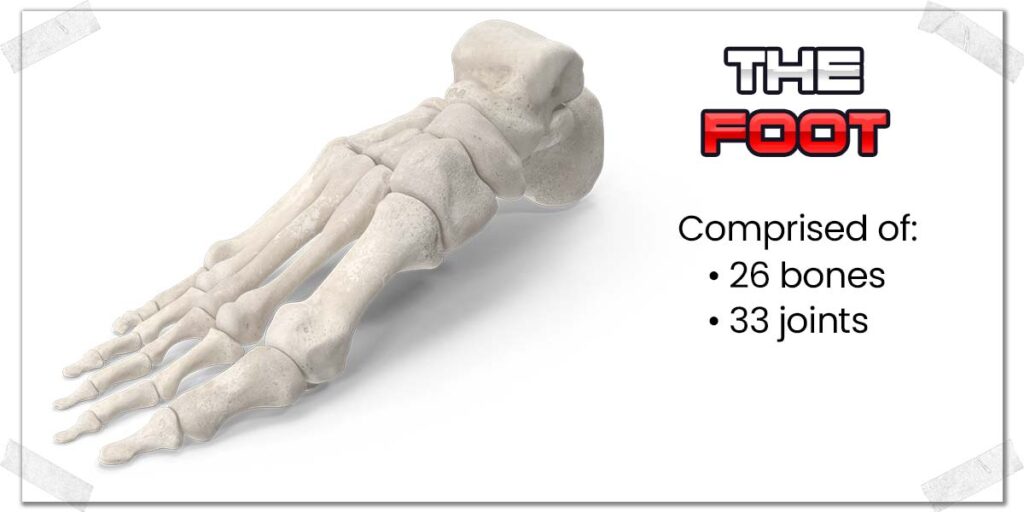
The foot refers to the bones and joints beneath the ankle joint. The foot itself is comprised of 26 bones and 33 joints.
Since various joints of the foot (the subtalar joint, in particular) can influence the movement of the ankle joint, biomechanical issues of the foot can easily lead to pain in the ankle joint or region (more on that later).
Essentially, since the foot and ankle play off one another so much, it’s easiest to think of each of these structures as one and the same – when one isn’t functioning ideally, it will affect the other.
Alright, keep all that in mind and let’s now look at the common causes of ankle pain when squatting!
Issue 1: Lousy ankle mobility
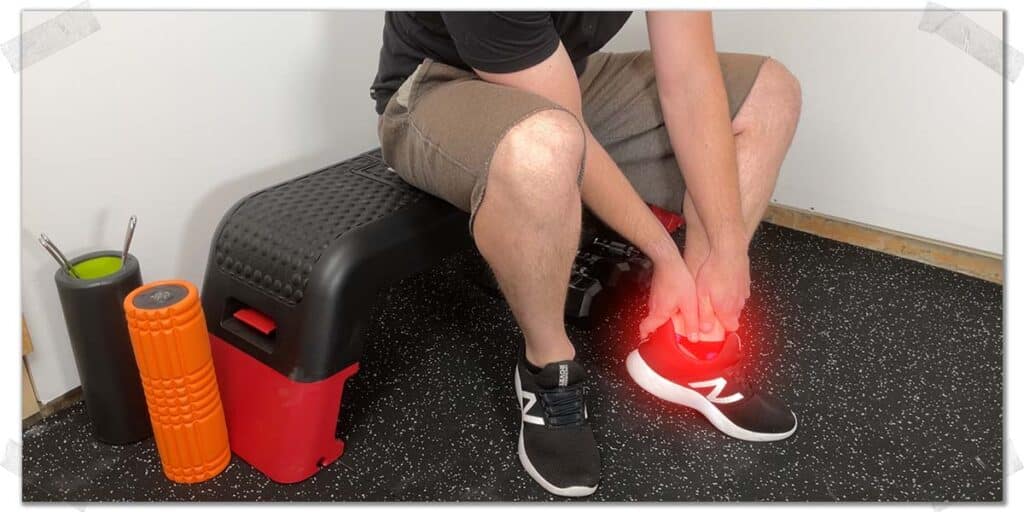
If your ankle joint isn’t moving as ideally as possible, it can often produce discomfort or pain and adversely affect your squat mechanics.
Normal ankle dorsiflexion range of motion is around 20 degrees and is achieved by the talus bone articulating with the tibia (this joint is anatomically known as the talocrural joint). But it’s more important to see if there’s a notable difference in mobility between each ankle rather than worrying about hard numbers in terms of degrees of range of motion.
The easiest way to check your ankle’s range of motion for dorsiflexion is to do the knee-to-wall test. Here’s how to do it:
- Stand facing a wall and place the tip of your big toe in contact with the wall.
- While keeping your foot flat on the ground, bend your knee and see if you can have your kneecap make contact with the wall.
- If you can make contact, slide your foot back by an inch or so and repeat the process.
- Keep sliding your foot back until you can no longer touch your kneecap to the wall while keeping your entire foot flat on the ground.
- Measure or mark the furthest distance in which you can have your kneecap touch the wall without lifting your heel off the ground.
- Repeat this process with your other foot and measure to see if there’s a difference in distance between each foot.
This simple test will force your ankle into maximally available dorsiflexion, helping you see how much of a discrepancy exists between one ankle and the other.
If there’s a notable difference, and your problematic ankle can achieve less distance away from the wall than your non-affected ankle, you’ll likely want to implement solution 1 below.
Solution 1: Work on your ankle mobility
The knee-to-wall test helps to determine if you have restricted range of motion in your ankle, but it won’t necessarily tell you what is specifically causing the restriction. For simplicity’s sake, within this article, we will consider two potential causes for reduced ankle dorsiflexion (and how to treat the underlying cause):
- Range of motion restriction arising from the talocrural joint
- Range of motion restriction arising from immobile tendons
If you feel more of a tightness in the back of your leg (around the heel or above), you’re likely dealing with tight calf muscles or a sensitive Achilles tendon. If you feel more discomfort (or pain) in the front of the ankle joint, you’re most likely dealing with a restriction from the ankle joint itself.
Improving ankle mobility can take some effort, as they’re often stubborn, especially if trying to do so on your own. Thankfully, it is possible, though it will take some dedicated effort and some time. If you’re unable to get some hands-on treatment from a qualified specialist, you can try the exercises in my article below to help make improvements to your talocrural joint’s ability to produce dorsiflexion:
Solution 2: Use squat wedges
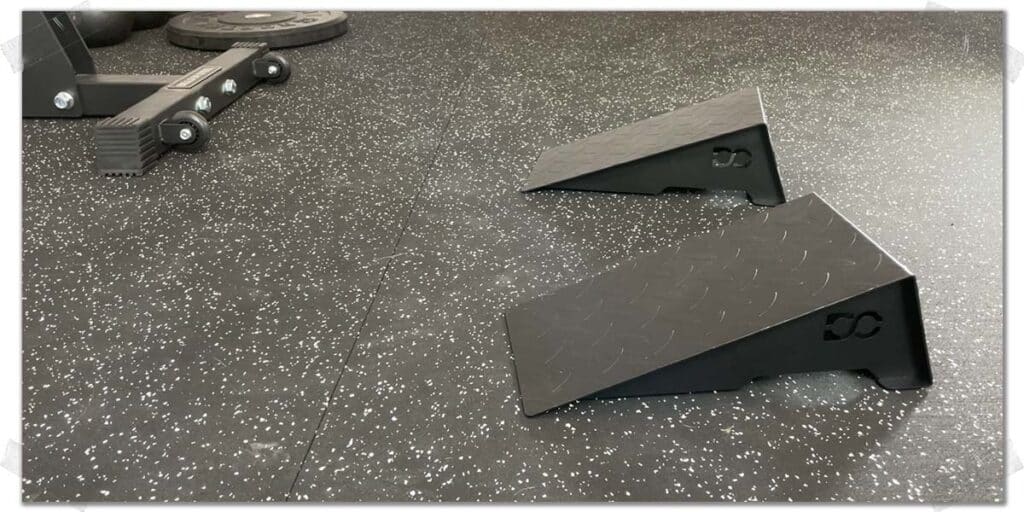
If you know that your ankle has some serious dorsiflexion mobility issues, it may be worth using squat wedges or heel lifts for the time being.
By having your heel elevated on a squat wedge or underneath any other implement that raises your heel off the floor, your ankle will be subjected to going through less dorsiflexion during your squat. This can be profoundly helpful for an ankle joint that has limited mobility.
The Achilles tendon must undergo notable lengthening when dropping into a squat. If this tendon is unhealthy or immobile in any sort of way, it will likely be extra sensitive to having a stretching force run through it, leading to pain within the tendon.
Mind you, this should only be a temporary workaround; your ultimate goal is to improve and restore mobility to your ankle, not to use squat wedges or a heel lift as a permanent training crutch.
If you want all the geeky details on how squat wedges can help make you a better lifter and eliminate certain types of joint pain, check out my article:
Pro tip: If you’re serious about your squats, you may want to consider picking up a pair of Olympic lifting shoes. These shoes are specifically designed for optimizing squatting in addition to other lifts.
Issue 2: Poor ankle and foot biomechanics
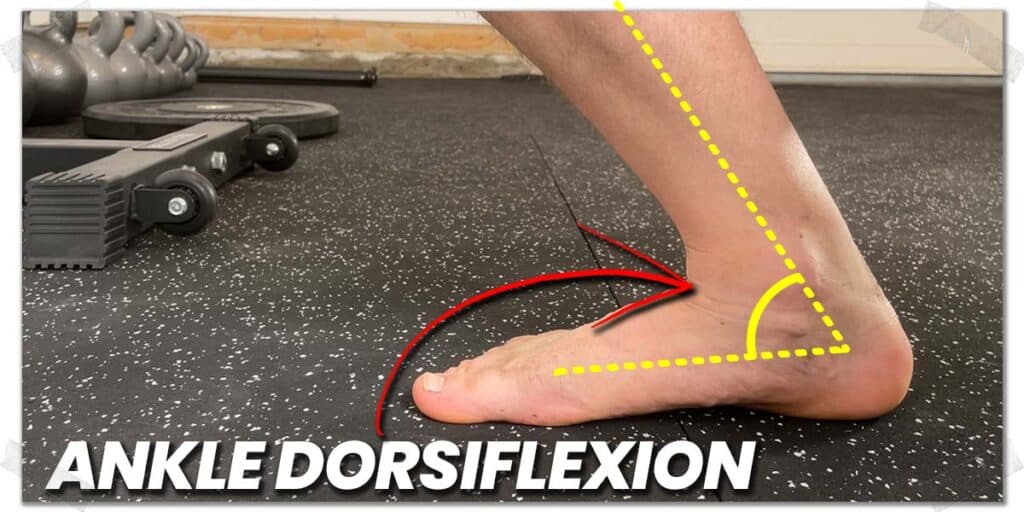
Your foot is the foundation of the building that it rests upon. Just as with a manmade building, if the foundation is flawed, it will affect the integrity of the structure(s) above.
For many individuals, the joints just below the ankle joint itself (below the talocrural joint) can be resting in less-than-ideal positions. When this happens, the forces transmitted From the foot into the ankle can force the ankle joint to move in less-than-ideal ways, leading to abnormal stress and strain, and, ultimately, pain within the joint or from surrounding tissues, such as ligaments and tendons.
Three rather common sources of poor foot biomechanics involve:
- Excessive pronation of the forefoot
- Excessive eversion of the ankle joint (talocrural joint)
- Excessive subtalar eversion of the rear foot (the “lower ankle”)
Let’s look at each of these common issues in more detail and discuss potential solutions to implement!
Excessive forefoot pronation
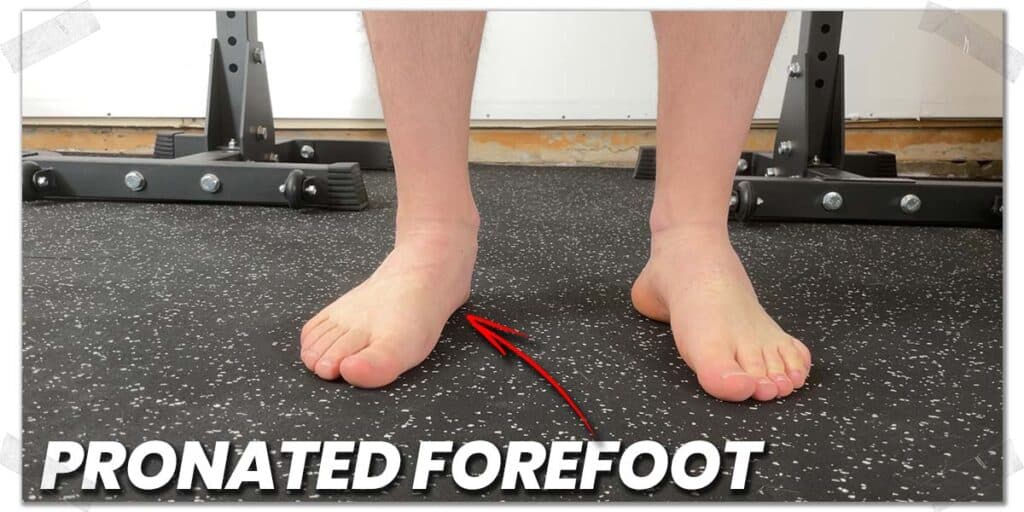
When dealing with the foot, pronation refers to the inwards rolling of the forefoot. Think of the position your foot moves into when placing more weight on the inside edge of your foot when walking — that’s pronation of the foot.
While foot pronation is normal, excessive pronation can cause pain and discomfort in the foot and ankle region. Essentially, it places abnormal amounts of stress on the joints, and even the surrounding tendons, leading to pain and dysfunction.
Ankle eversion
Eversion refers to the inward rolling of your ankle. If you were to walk and move your foot and ankle in a way that allows you to place more pressure on the inside portion of your heel, you’d be moving your ankle and subtalar joints into a position of eversion. Just as with excessive forefoot pronation, excessive ankle eversion can compromise the movement and function of the ankle joint when squatting.
Subtalar eversion
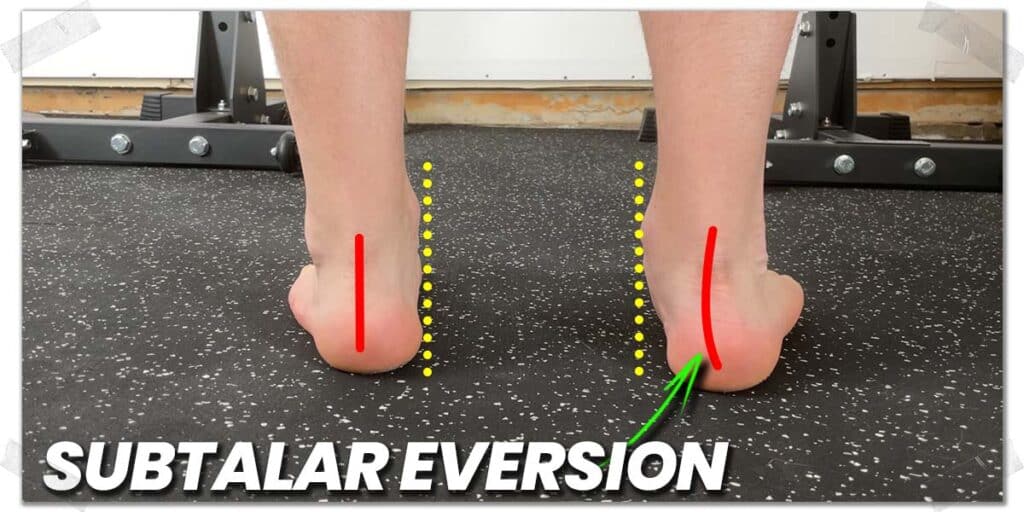
The subtalar joint refers to the joint that’s formed between the top of the heel bone (the calcaneus) and the bottom of the talus. While this joint doesn’t have a lot of natural movement (only between 5-10 degrees for eversion), it’s enough to compromise foot and ankle mechanics enough to cause ankle pain when squatting.
Solution 1: Play around with your squat stance
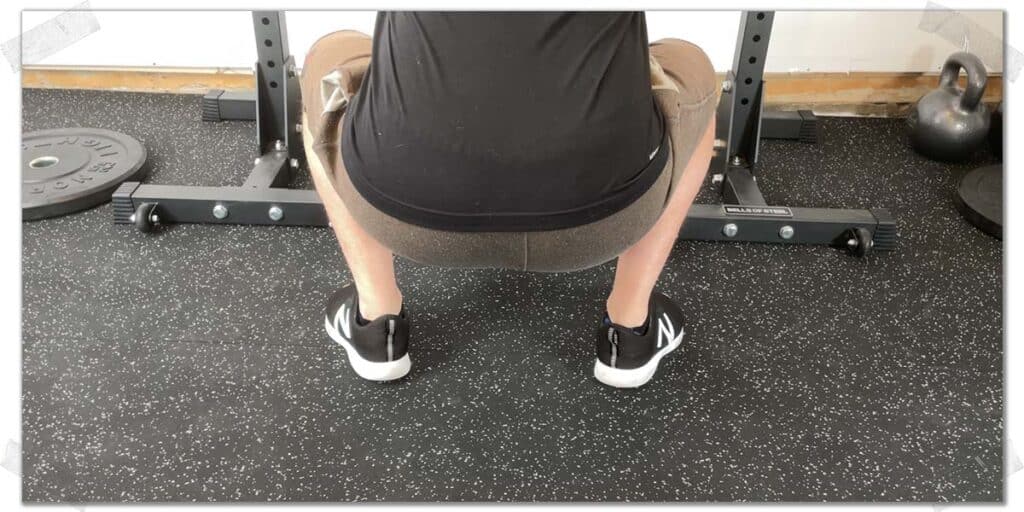
Despite what others may tell you, there’s no universal “best squat stance.” Yes, there are general principles and guidelines for positions to follow; however, individuals often require slightly different foot and stance positions to best suit their body’s needs.
Numerous factors will influence what type of squat stance and lower body positioning is best for you, including:
- Your hip anatomy (degree of anteversion or retroversion in particular)
- Your current mobility
- Previous or current injury
- Your training goals
- The type of squat you’re performing
Without getting lost in the weeds, different squat stances and foot positions can affect how much or little forefoot pronation and ankle eversion take place throughout the squat.
As such, when squatting, you may want to try any of the following:
- Slightly pointing your feet outwards a bit more
- Keeping your toes pointing more straight forwards
- Widening your squat stance
- Narrowing your squat stance
Each of these changes can notably influence the position(s) that the joints of your foot and ankle might be exposed to during the squat. It may not seem like a lot, but it can be enough to reduce unnecessary stress or strain on the ankle when squatting.
As a general example, a very wide squat stance will expose the forefoot to more pronation and the ankle and rear foot to more eversion, while a narrower stance will likely reduce pronation and ankle eversion.
Solution 2: Consider your footwear
In addition to modifying your squat stance, it may also be worth taking a look at your footwear. Footwear can be quite helpful or hindering, depending on what’s currently happening with your foot and what it’s resting on directly underneath. The type of footwear you squat in can be numerous, and footwear factors influencing foot and ankle mechanics can become incredibly complex.
But for simplicity’s sake, let’s look at the common footwear issues to consider if you’re experiencing ankle pain when performing any of your squats.
Pro tip: If you’ve been squatting in the same shoes for a long period of time and have only recently begun to experience ankle pain during squats, it’s likely not due to your footwear. Conversely, if you’ve recently begun squatting in a different type of shoe and have begun to experience ankle pain, the issue could be more likely due to the change occurring from your new footwear.
Footwear issue 1: Inadequate or excessive arch support
For starters, the cause of your ankle pain could be coming from the position that your forefoot or midfoot are (or aren’t) being kept in when squatting in your shoes. The foot has a few different inherent arches, which help provide it with support and proper functional abilities. For the sake of this article, I’ll just be mentioning the inner longitudinal arch, which is the biggest (and most well-known) arch of the foot.
If the insole of your shoes has an excessively high (or not high enough) arch, it might influence how your foot and ankle behave (move) when squatting.
A foot that lacks proper inner arch support is prone to collapsing or rolling inwards, which is known as pronation.
As mentioned earlier in the article, excessive forefoot pronation can drastically change how the ankle joint moves when performing the squat.
A foot with excessive inner arch support may predispose the forefoot to more of a supinated position, which, again, can adversely affect how the ankle joint moves throughout the squat.
The solution: The solution with either of these situations is to ensure your footwear has the arch support that your feet require. This is far beyond what I’m able to offer within the scope of this article. Nonetheless, some experimentation may be in order here:
- Try a bit of squatting without your shoes on and see how this makes your ankle and foot feel. You may only need to do this for a set or two, or you may want to do this for a few workout sessions. Take note of how things feel without any arch support underneath your feet.
- Try squatting in a different pair of shoes, if possible. Again, you may only need to do this for a set or two or for a handful of workouts. Consider doing this for as long as needed until you know whether or not a different pair of shoes is favourably or adversely affecting how things feel.
From there, you’ll need to consider whether or not it’s worth making any longer-term changes to your footwear. If you need more support, you can opt for insoles that you can buy at places like the drugstore or through a custom-fitting process (typically expensive). If you’re not sure what’s best for you, it may be worth reaching out to a pedorthist or other foot specialist and getting their professional insight.
Footwear issue 2: Not enough heel lift
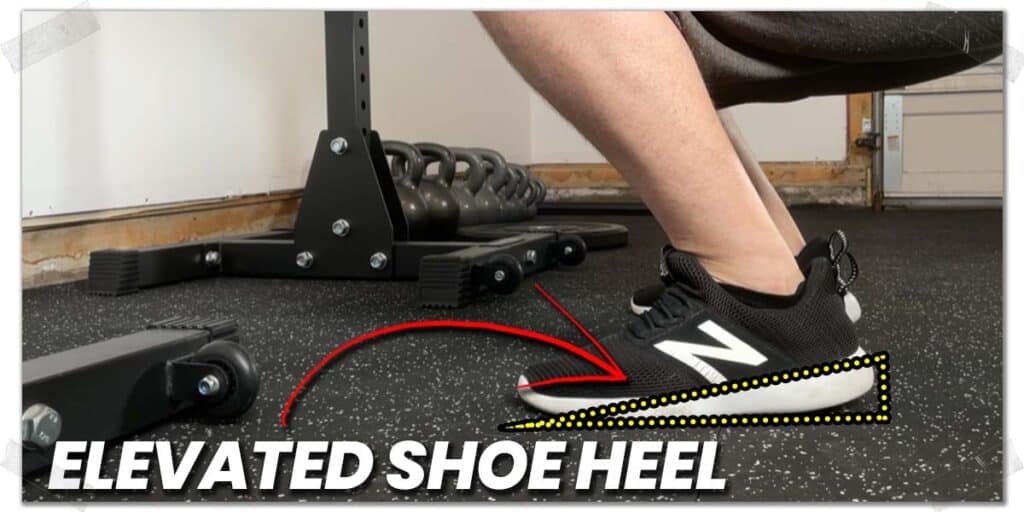
If your shoes are rather minimal or don’t offer much (or any) heel elevation, this could be an issue if your ankle is lacking mobility and being forced to move through a greater range of motion than it otherwise is capable of doing pain-free.
Note: flat shoes for squatting are not inherently bad and can, in fact, be quite beneficial for many individuals and various circumstances. It potentially becomes an issue, however, if ankle mobility is low or less than ideal.
As with back in issue 1, lousy ankle mobility can wreak havoc on your ankle when squatting. If your ankle dorsiflexion is poor and using squat wedges or placing your heels on an elevated surface isn’t ideal for you, you may want to consider trying shoes with an elevated heel, such as lifting shoes.
Lifting shoes have an elevated heel, which can reduce the required range of motion the ankle must go through when squatting. This can help reduce ankle pain when squatting if your pain is arising due to poor ankle dorsiflexion.
The solution: If you need to have your heels elevated for the time being, and you don’t want to pick up a dedicated pair of lifting shoes, you can try placing the following common items under your heals when squatting:
- A wooden plank, such as a 2×4 or 2×6
- Dedicated squat wedges
- Some small weight plates
These items are often relatively easy to find in gyms (especially the small-weight plates), making them a great and quick option for propping up your heels when squatting.
Issue 3: Tendinopathy
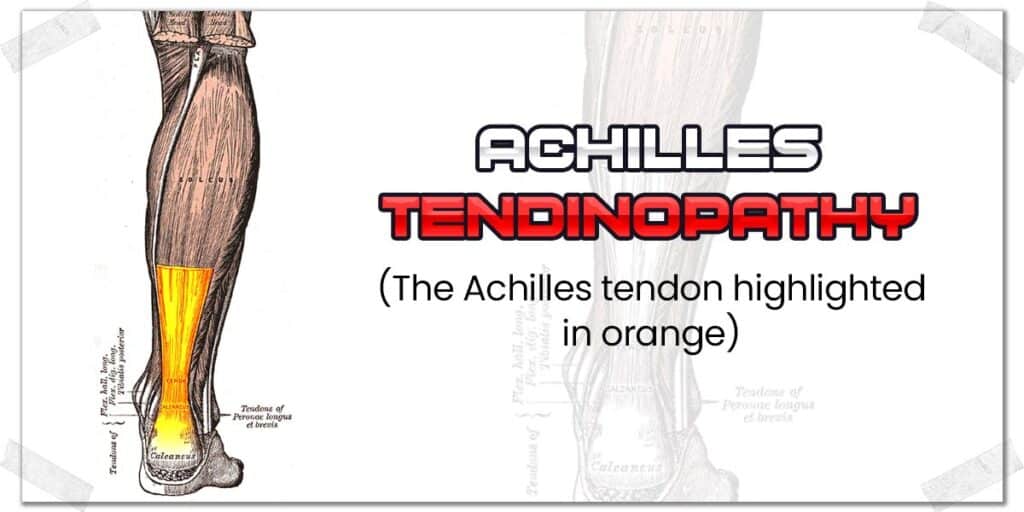
Tendinopathy refers to a general dysfunction or lack of health from a tendon. It can often produce painful sensations anywhere within the tendon or its accompanying muscle. While there can be numerous tendons that cause pain around the ankle, this article will focus on the most common ones, which tend to be:
- The Achilles tendon
- The tibialis posterior tendon
- The peroneal/fibularis tendons
These tendons can become unhealthy or become painful for various reasons. These reasons can include (but are not limited to):
- Excessive stress/strain from poor foot and ankle biomechanics
- Excessively high amounts of repetitive activities (overuse)
- Sudden changes in activity levels
- Underutilization of the tendons (not using them enough)
- Any combination of the above factors.
Achilles tendon issues
The most commonly affected tendon that can lead to ankle pain during squats is the Achilles tendon. This is the thick tendon that connects the bulk of the calf muscles to the bottom region of the heel bone (the calcaneus).
The Achilles tendon must undergo notable lengthening when dropping into a squat. If this tendon is unhealthy or immobile in any sort of way, it will likely be extra sensitive to having a stretching force run through it, leading to pain within the tendon. Many people describe this feeling as pain in the back of the ankle.
Pro tip: If you’re having discomfort in your Achilles tendon, ensuring your calf muscles aren’t excessively tight can be a smart move to make; oftentimes, tight calf muscles will restrict the range of motion in the Achilles tendon and thus, the ankle joint itself.
Tibialis posterior issues
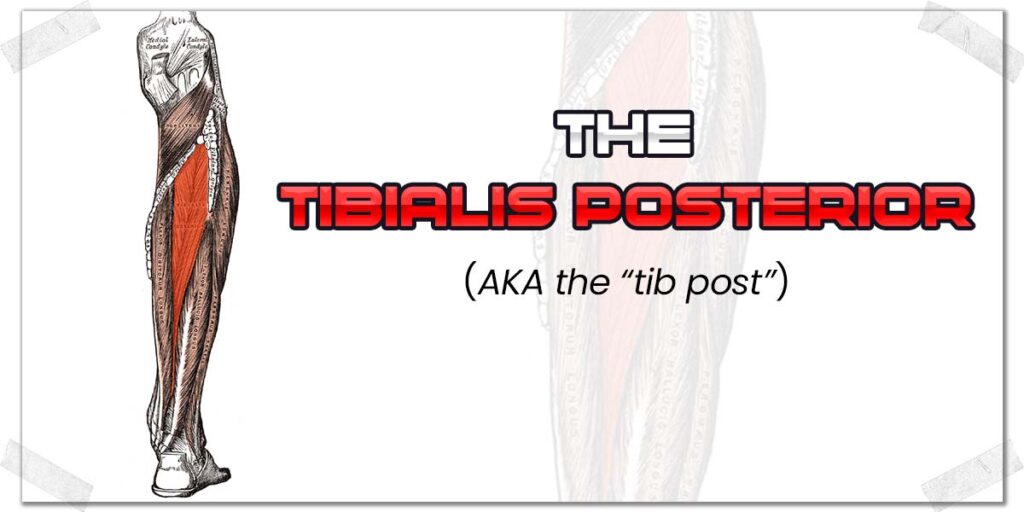
The tibialis posterior is a muscle deep in the lower leg that forms a long tendon that runs down the inside of the ankle (just behind the inner ankle bone) and attaches to the underside of the foot. When this tendon is unhealthy, it often produces pain in or around the inside ankle region.
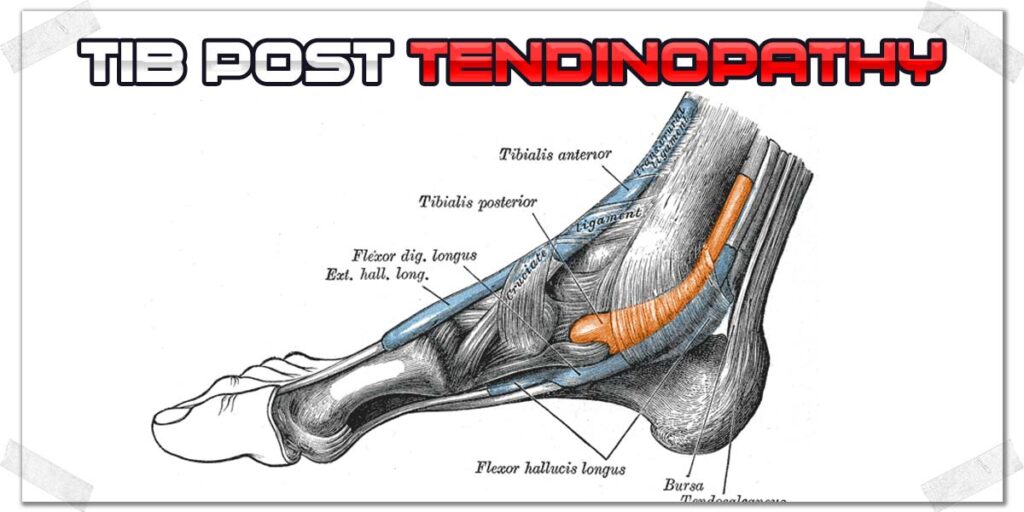
The peroneal/fibularis tendons
The peroneus longus and peroneus brevis are two muscles on the outer portion of the lower leg. They cross the outside of the ankle joint (just behind the outer ankle bone) and attach to bones on the outside edge of the foot. Just like the tibialis posterior tendon on the other side of the ankle, these tendons can produce pain around the outer portion of the ankle region when irritated or unhealthy.
The solution for tendon issues
Regardless of which tendon(s) may be causing your ankle pain, the overall treatment strategy will be largely the same; you’ll need to strengthen and stimulate the tendon appropriately without overloading it in the process.
Additionally, you’ll need to ensure that any abnormal or excessive stress or strain the tendons are exposed to from poor foot biomechanics are corrected (otherwise, the issue will likely keep reoccurring).
I would advise becoming familiar with the Alfredson’s heel drop protocol. Its got some decent evidence behind it as a tendon rehab protocol for Achilles tendon issues.1–3 You can take the concepts from this protocol and implement them for exercises that are designed to strengthen the other tendons of the foot and ankle.
As a general starting point for your tendon rehab exercises, consider the following points:
- Exercises performed for tendon strengthening or improving tendon health should be done very slowly. Slow movement is much more effective for this aspect of tendon rehab than fast movement.
- Drumming up some discomfort during the exercise is fine, but not pain. Pain should be avoided.
- Discomfort should not increase as you perform your sets and repetitions for the exercise(s). If anything, you should expect the discomfort to subside as you perform the exercise (this is the ideal response).
Universal tips for ankle pain when squatting
Regardless of the specifics of your ankle issue(s), you’ll likely want to consider implementing the points below; they are often helpful for keeping ankles happy and healthy when squatting or working out in general:
- Having a warmup exercise or two before squatting can be helpful for making sure your ankle is moving ideally as possible.
- If you have a generally stiff ankle, wrapping a heat pack or similar device around the ankle can help to promote blood flow and circulation to the region, which can help with improving mobility. If you don’t have a hot pack, soaking it in a warm tub or pale of water can also work.
- Performing an exercise or two a few times per week that maintains or improves the health and strength of the tendons that cross your ankle can be a smart move to make. It doesn’t have to be anything crazy or intense. Just a bit of stimulus to keep these tissues that cross your ankle happy and healthy.
Final thoughts
There can be numerous reasons for experiencing foot and ankle pain when squatting. Usually, ankle pain can be cleared up rather effectively once you get to the root cause of the issue.
Get a qualified healthcare specialist to help ensure you know exactly what’s going on, and use the insight within this article to help get you pointed in the right direction for your path to recovery.
References:

Hi! I’m Jim Wittstrom, PT, DPT, CSCS, Pn1.
I am a physical therapist who is passionate about all things pertaining to strength & conditioning, human movement, injury prevention and rehabilitation. I created StrengthResurgence.com in order to help others become stronger and healthier. I also love helping aspiring students and therapists fulfill their dreams of becoming successful in school and within their clinical PT practice. Thanks for checking out my site!

